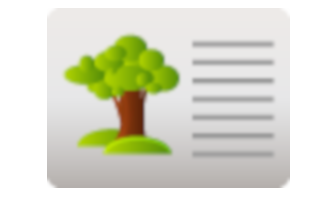Changes on earth
Science, Grade 3
Changes on earth
Study Guide

Changes on earth
Flash Cards

Changes on earth
Quiz

Changes on earth
Worksheets

Changes on earth
Games

Study Guide Changes on earth Science, Grade 3
❮
1
/
4
❯
CHANGES ON EARTH Layers of Earth The Earth is made up of three main layers: crust, mantle, and core. We live on the outer layer of the Earth called the crust. The Earth’s crust is made up of many different rocks. Lesson Checkpoint: What layer of the Earth do we live on? Under the Earth’s crust is the layer called the mantle. The Earth’s mantle is made of igneous and metamorphic rocks. The inside layer of the Earth is called the core. The Earth’s core is made of metal. The Earth’s core is so very hot, hot enough to melt but the center of the core is packed together so tightly it is solid. The outer section of the Earth’s core however is hot, thick liquid. Lesson Checkpoint: What types of rocks make up the Earth’s mantle? © Copyright NewPath Learning. All Rights Reserved. Permission is granted for the purchaser to print copies for non-commercial educational purposes only. Visit us at www.NewPathLearning.com.
Earth’s Landforms Landforms are many different solid features formed on top of the Earth’s crust. Some also involve bodies of water. A glacier is a slow moving large body of ice. An ocean is made up of saltwater. Oceans cover just about ¾ of the Earth’s surface. A river is a natural flow of water that is larger than a brook or a creek. A lake is large body of still water surrounded by land. A coast is the land that is right next to the ocean that forms the coastline. A valley is a low, narrow area that is formed by rivers and glaciers. A plain is a large, mostly flat area of land. A plateau is a plain that is up higher than all the land surrounding it. Sometimes you will find a plateau on a mountain. © Copyright NewPath Learning. All Rights Reserved. Permission is granted for the purchaser to print copies for non-commercial educational purposes only. Visit us at www.NewPathLearning.com.
A hill is an elevated land but it is not as tall as a mountain. A mountain is elevated land that reaches high above the Earth’s surface and is larger than a hill. Lesson Checkpoint: Which is taller, a hill or a mountain? A volcano is an opening in the Earth’s crust from which hot, melted rock forcefully comes out when pressure is built up inside the Earth. Magma is what we call the melted rock that is beneath the Earth’s surface. When it bursts out of the volcano and flows on land we call that same molten rock lava. Volcanoes erupt when magma is close to the Earth’s surface and pressure builds up forcing the magma out of the Earth’s crust. Lesson Checkpoint: What is the difference between magma and lava? An earthquake is a sudden shift in the Earth’s crust that causes the ground to shake and vibrate violently. Most earthquakes happen near faults. Faults are large cracks in the Earth’s crust. © Copyright NewPath Learning. All Rights Reserved. Permission is granted for the purchaser to print copies for non-commercial educational purposes only. Visit us at www.NewPathLearning.com.
Weathering is the process of rocks being changed over time by conditions such as rain, snow, ice, pressure. Rocks can change shape, size, or break into smaller pieces from weathering. Water can change the minerals in rocks making the rocks weaker and can cause rocks to weather and to break up into smaller pieces. The movement of land or rocks that has been weathered is called erosion. A strong storm can cause waves to wash away rocks and land at a beach; that is erosion. Erosion is caused by water, wind, gravity, and glaciers. © Copyright NewPath Learning. All Rights Reserved. Permission is granted for the purchaser to print copies for non-commercial educational purposes only. Visit us at www.NewPathLearning.com.
